Kingsley Singleton offers a few straightforward techniques for making studio-style images of dogs
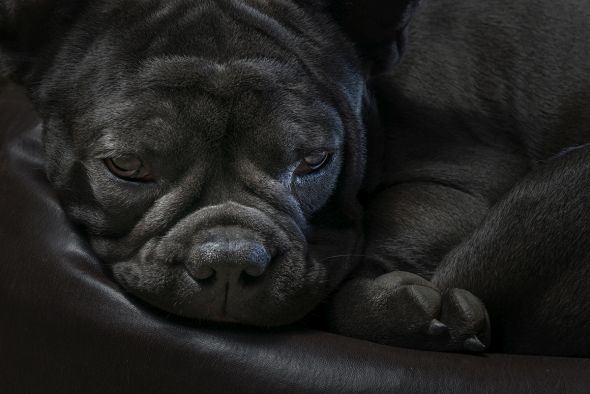
All images by Kingsley Singleton. Some images used with kind permission of Bright Publishing
Why did I pick dogs as my specialism? I made the decision after a conversation with Gregory Heisler (the renowned portrait photographer, known for having shot more Time magazine covers than anyone else). When I asked him how best to evolve as a photographer, he told me this: “Shoot what you can’t help but shoot; shoot what you love. Those will be your best pictures, and they’ll be the ones that people respond to.”
And so, I realised it was to be dogs. Now I shoot lots, both commercially and for fun, and also to help publicise the unlucky hounds from my local rehoming charity.
Here I’m going to describe some of the ways in which you can get successful, studio-style shots of your dog (or someone else’s). The shots here use a mix of lighting, from regular studio flash to speedlights and LED lighting. But first, some basics...
Keep them calm
You can use many of the same portrait techniques on dogs as you would on humans, but when it comes to subject direction, you’ll have to get creative. The better trained the dog is, the easier they will be to work with, but there are ways of positioning and getting the attention of more unruly beasts.
As pack animals, dogs respond to your behaviour. If you’re relaxed, they will be calm, too. If you’re nervous or rushed, they’ll be anxious and mistrustful. So, it’s best to use calming techniques, especially given that you’ll be using equipment that’ll likely be alien to them: your camera, flashes and lighting stands. Take time to let them have a good sniff around your gear, and give them treats as they do, so it becomes associated with good things. The more you do this, the calmer they’ll be.
Biscuits are your friend
The calmer and more compliant the subject, the more technique you can throw at your shots. If they’ll stay in the same spot, you’ll be able to try more complicated lighting arrangements or use a shallower depth of field without the risk of misfocusing.
Aside from trust, the other big influence is food. Don’t underestimate the power of a dog biscuit, or some other stinky treat. I almost always use treats to get my subjects to make eye contact with the camera, or to have them look in the direction I want.
Setup 1: Motivated window lighting
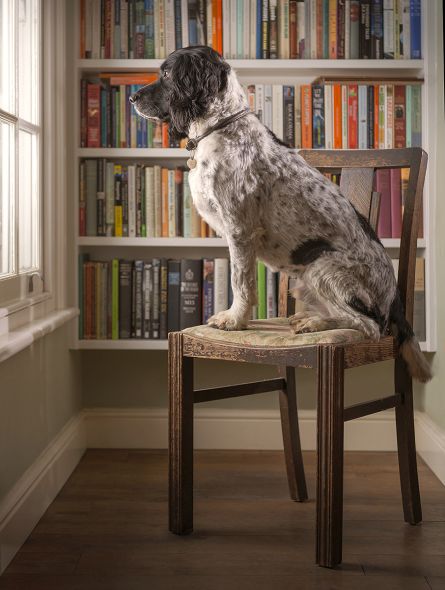
For this shot, I used a technique I picked up from the work of the aforementioned Gregory Heisler (he in turn learnt it from observing lighting on movie sets). The idea is to give the available light a push, but keep it looking natural. This creates a different look to a regular studio portrait, where the light – as good as it might be – looks artificial.
I set up this shot of Bunk as part of a lighting test for Professional Photo magazine, using a pair of powerful LED lights. You can alternatively use tungsten lights or regular flash – like all lighting work, the trick is in how you position and modify it. I placed the light outside a window, so it was hidden from my shooting position, and fitted it with a large softbox, giving just the sort of soft, north-facing window light I wanted. A second light was used from the opposite side, at a lower power, to fill the shadows. To get Bunk to look out of the window, I fixed a dog biscuit to it with Blu-Tack, then set up the frame so it would be just out of shot.
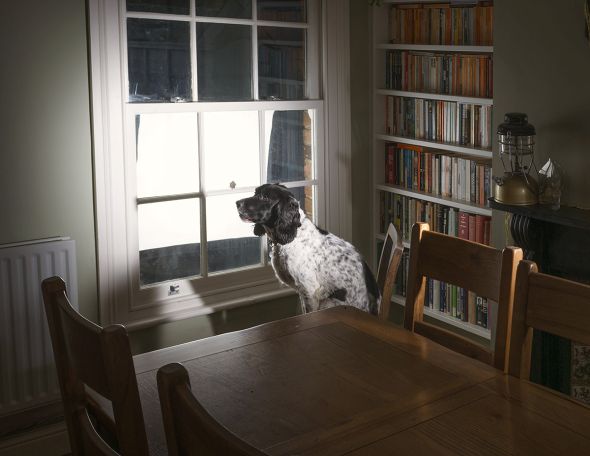
With continuous lighting, exposure was easy. Using a Nikon D800 with a 24-70mm f/2.8 lens at 70mm, I dialled in settings of 1/80sec at f/3.2 and ISO 400. You can see from those settings that the LED light, while bright to the eye, is not as powerful as flash, so if you’re working this way, don’t be afraid to push the ISO a bit; it’s better than a shot that’s full of camera-shake.
Setup 2: Full studio lighting
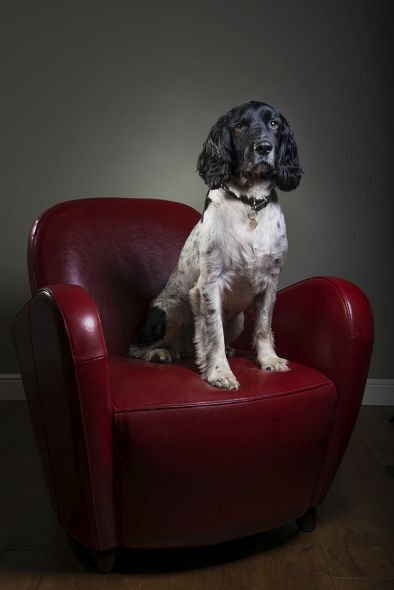
You don’t need to shoot in an actual studio to get the look. All you really need is a blank background and a little space. Here, I moved furniture around so I could place a chair in front of a plain wall and set up four flashes.
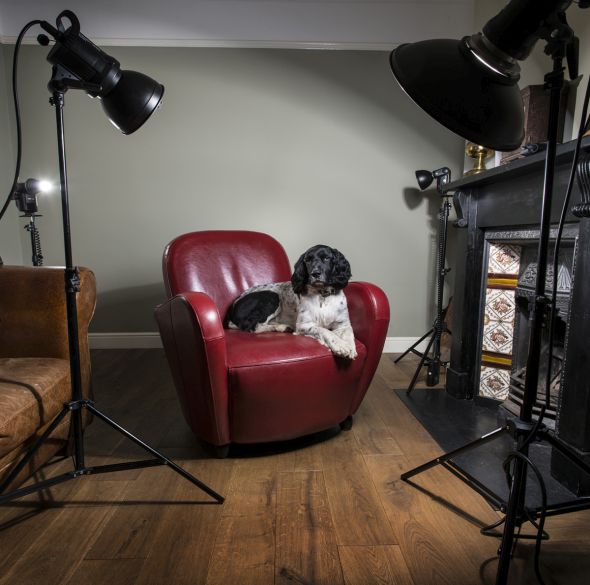
For the key light, I fitted a beauty dish with a grid, setting it high and angled down onto Bunk to avoid too much spill. I added a low-powered light from the side to add some contrast; this was fitted with a grid to focus it. From the rear, I used one light fitted with a snoot as a hair light, and another gridded light to put a spotlight on the wall.
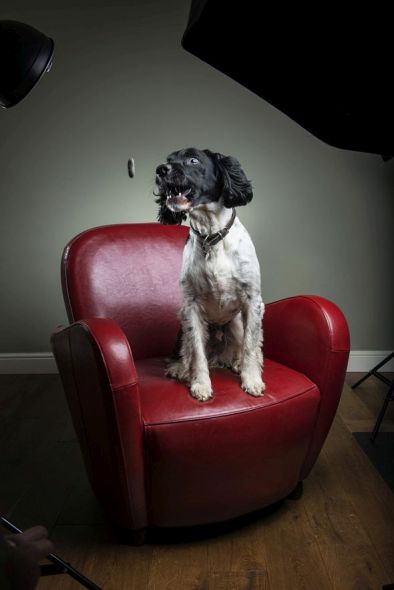
For exposure, I used 1/250sec shutter speed at f/11 and ISO 100, and modified the power of the lights to suit. Thankfully, this could all be done using the triggering system, which prevented me from disturbing Bunk or falling on my arse in the darkened room. The eye contact was achieved by me Blu-Tacking a biscuit to the top of my lens hood.
Setup 3: Speedlights and slowing down
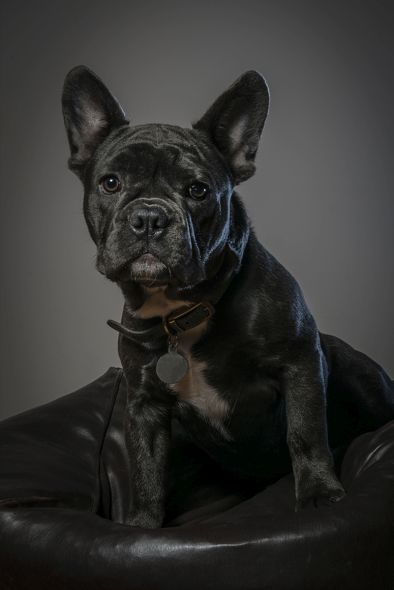
This shoot was a good example of a dog calming down as they got used to the process; the shots improved as the dogs relaxed. I was working with two speedlights – one fitted with a small softbox and the other with a blue gel – fired in from the side to provide a highlight.
Using two speedlights meant I could quickly reposition them if I needed to, but fortunately Pedro quickly got the idea and settled on his bed. Before he was in place, I worked out the exposure (1/200sec at f/16, ISO 125) and got the lights triggering, so I could concentrate on shooting calmly, which would further relax him.
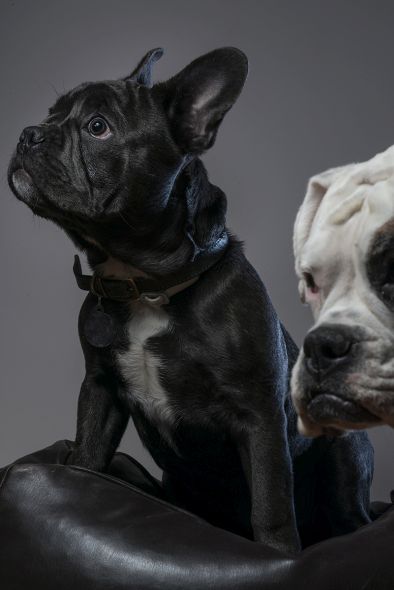
To start with there was lots of movement, and his big sister was trying to get involved, too. But as everyone relaxed it became easier to control and there was more and more eye contact, thanks to the treats. Finally, he got tired of all the attention and was a sitting duck, so I could even move in for some tight close-ups.
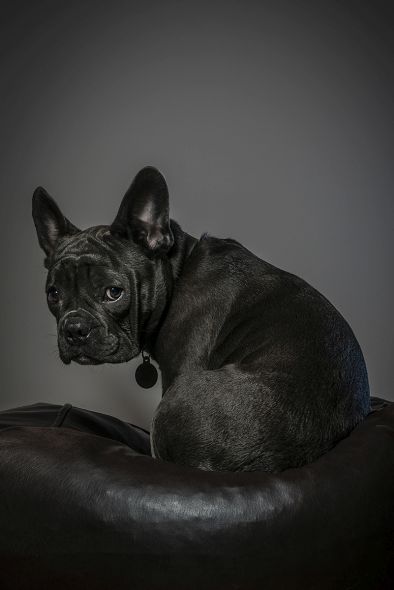
About the Photographer
Kingsley Singleton is a freelance photographer and writer based in Lincolnshire. His website is kingsleysingleton.com, and you can follow him on Facebook and Twitter.

